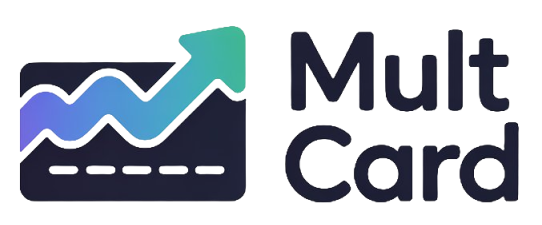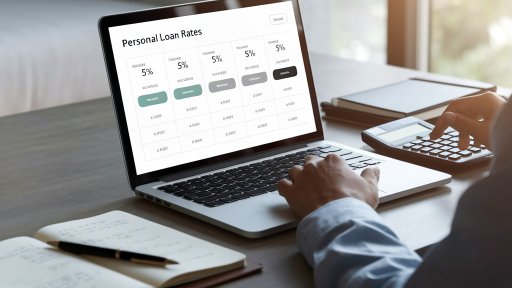Navigating the world of personal finance can sometimes feel like trying to solve a complex puzzle, especially when you need access to funds. A personal loan can be an incredibly useful tool, whether you’re looking to consolidate debt, finance a large purchase, or cover an unexpected expense. But the path from application to approval isn’t always straightforward.
The key to success lies in preparation and understanding. Lenders have a specific set of criteria they use to evaluate risk, and knowing what they’re looking for can dramatically increase your chances of getting a “yes.” This guide will walk you through every step of the process, from understanding the lender’s mindset to what to do if your application is denied.
Understanding What Lenders Are Looking For
Before you even begin an application, it’s crucial to see things from the lender’s perspective. Their primary goal is to ensure the money they lend will be paid back, with interest. To assess this risk, they focus on a few key areas of your financial profile. Think of it as a financial health check-up.
The Pillars of Creditworthiness
Lenders often evaluate applicants based on what are sometimes called the “C’s of Credit.” While the exact number of “C’s” can vary, they generally boil down to your reliability, your ability to pay, and your existing financial stability.
- Character (Credit History): This is your track record as a borrower. Lenders will pull your credit report to see how you’ve handled debt in the past. Do you pay your bills on time? How long have you been using credit? Any past delinquencies, bankruptcies, or collections will be noted here. A long history of responsible credit use signals reliability.
- Capacity (Ability to Repay): This looks at your income and existing debt obligations to determine if you can realistically afford a new loan payment. The most common metric used here is the debt-to-income (DTI) ratio, which we’ll cover in more detail shortly. A stable employment history and sufficient income are vital.
- Capital (Financial Resources): While not always the primary factor for an unsecured personal loan, lenders like to see that you have some financial stability. This can include savings, investments, or other assets. It shows that you have a financial cushion and aren’t living paycheck to paycheck, which reduces their risk.
Why Your Credit Score is King
Your credit score is a numerical summary of your credit history and is one of the most important factors in any loan application. Scores typically range from 300 to 850, and lenders use them to quickly gauge your creditworthiness. A higher score indicates lower risk.
Here’s a general breakdown of what credit score ranges mean to lenders:
- Exceptional (800-850): You are a prime candidate and will likely be offered the lowest interest rates and best terms.
- Very Good (740-799): You are considered a very reliable borrower and will have access to competitive rates.
- Good (670-739): This is the range where most Americans fall. You have a good chance of approval, but you may not get the absolute best interest rates available.
- Fair (580-669): You may find it harder to get approved by traditional banks and might have to look at lenders specializing in “fair credit” loans, often with higher interest rates.
- Poor (300-579): Approval will be very difficult. If you are approved, it will likely be for a smaller amount with a very high interest rate and fees.
Knowing your score is the first step. You can get free copies of your credit report annually from the major credit bureaus. Understanding where you stand allows you to manage expectations and take steps to improve if needed.
A Step-by-Step Guide to Boosting Your Approval Odds
Now that you know what lenders are looking for, you can take proactive steps to present yourself as the ideal candidate. This isn’t about tricking the system; it’s about showcasing your true financial responsibility.
Step 1: Check and Understand Your Credit Report
Before lenders see it, you should see it first. Obtain a free copy of your credit report from all three major bureaus (Equifax, Experian, and TransUnion). Go through it line by line. Look for any errors, such as accounts that aren’t yours or incorrect payment statuses. Disputing and correcting errors can provide an immediate boost to your score.
Step 2: Improve Your Credit Score (If Necessary)
If your score is in the “fair” or “poor” range, it’s wise to spend a few months improving it before you apply. This could save you thousands of dollars in interest over the life of the loan. Here are the most impactful actions you can take:
- Make all payments on time: Payment history is the single biggest factor in your credit score.
- Pay down credit card balances: Your credit utilization ratio (the amount of revolving credit you’re using compared to your total limits) is a major factor. Aim to keep it below 30%.
- Don’t close old accounts: The length of your credit history matters. Keeping old, unused cards open (as long as they don’t have an annual fee) can help this factor.
- Limit new credit applications: Each application can result in a “hard inquiry,” which can temporarily lower your score.
Step 3: Calculate Your Debt-to-Income (DTI) Ratio
Your DTI ratio is a critical indicator of your capacity to take on new debt. To calculate it, add up all your monthly debt payments (mortgage/rent, auto loans, student loans, credit card minimum payments) and divide that total by your gross monthly income (your income before taxes).
Example: Your total monthly debt payments are $1,500 and your gross monthly income is $5,000. Your DTI is $1,500 / $5,000 = 0.30, or 30%.
Most lenders prefer a DTI ratio below 43%, with many looking for a DTI under 36% for the best loan terms. If your DTI is high, focus on paying down existing debt or finding ways to increase your income before applying.
Step 4: Determine How Much You Really Need to Borrow
It can be tempting to ask for more than you need, but this can work against you. Requesting a larger loan means a higher monthly payment, which could push your DTI into a riskier zone for the lender. Be realistic. Create a budget and determine the exact amount you need to achieve your goal. Applying for a reasonable, justifiable amount increases your credibility as a borrower.
The Personal Loan Application Process Demystified
With your financial house in order, you’re ready to tackle the application itself. Being organized will make this stage smooth and stress-free.
Gathering Your Required Documents
Lenders need to verify the information you provide. Having these documents ready will speed up the process significantly. While requirements vary by lender, you can generally expect to need:
- Proof of Identity: Government-issued photo ID (driver’s license, passport).
- Proof of Address: Utility bill, lease agreement, or bank statement with your name and address.
- Proof of Income: Recent pay stubs, W-2s, tax returns, or bank statements.
- Employment Verification: Your employer’s name and phone number.
- Details of Existing Debts: Statements for any other loans or credit cards you have.
Pre-qualification vs. Pre-approval: What’s the Difference?
You’ll see these terms used frequently. Understanding the distinction is key to shopping for a loan without harming your credit score. Most online lenders offer pre-qualification, which is a fantastic first step.
| Feature | Pre-qualification | Pre-approval / Formal Application |
|---|---|---|
| Credit Check Type | Soft inquiry (does not affect your credit score) | Hard inquiry (can temporarily lower your score by a few points) |
| Information Required | Basic personal and financial information (e.g., income, rent) | Detailed information and submission of documents (pay stubs, ID) |
| Offer Status | A conditional estimate of rates and terms you might receive | A firm offer of credit, pending final verification |
| Best Use | Shopping around and comparing potential rates from multiple lenders | When you have chosen a specific lender and are ready to proceed |
Choosing the Right Lender for You
Not all lenders are created equal. The best choice for you depends on your credit profile, how quickly you need the funds, and what kind of customer experience you prefer.
- Traditional Banks: A good option if you have an existing relationship and a strong credit profile. They may offer relationship discounts but can have a slower, more stringent application process.
- Credit Unions: As member-owned non-profits, credit unions often offer lower interest rates and more flexible terms than banks, especially if your credit is less than perfect. You’ll need to become a member to apply.
- Online Lenders: These fintech companies often have the fastest application and funding times, sometimes as quick as the next business day. They cater to a wide range of credit scores and their online platforms are typically very user-friendly. You can find more information about them on sites like Forbes Advisor.
Common Mistakes to Avoid When Applying
Even a strong applicant can get tripped up by simple mistakes. Be mindful of these common pitfalls.
- Submitting Too Many Applications at Once: As mentioned, every formal application triggers a hard inquiry. A flurry of inquiries in a short period can make you look desperate for credit and lower your score, making approval harder. Stick to pre-qualifications for shopping around.
- Not Reading the Fine Print: A low interest rate is great, but you need to understand the full cost of the loan. Look for origination fees, prepayment penalties, and late payment fees. These can significantly impact the total amount you repay.
- Being Dishonest on Your Application: Never inflate your income or omit debts. Lenders have sophisticated verification processes, and if you’re caught, your application will be immediately denied. It can also be considered fraud.
What to Do If Your Loan Application is Denied
A rejection can be disheartening, but it’s not the end of the road. It’s an opportunity to learn and improve your financial standing.
Understand the Reason for Denial
By law, the lender must provide you with an “adverse action notice” that explains why you were denied. Common reasons include a low credit score, a high DTI ratio, insufficient income, or problems on your credit report. This notice is your roadmap for what to fix. If the reason is based on your credit report, you’re also entitled to another free copy of that report to review.
Formulate a Plan for Improvement
Once you know the “why,” you can create a targeted plan. If your DTI was too high, focus on paying down a credit card. If your credit score was the issue, review the steps outlined earlier to build your credit history. Sometimes, simply waiting 6-12 months while you strengthen your finances is the best strategy. Exploring alternatives can also be a viable option, such as getting a secured loan or asking a creditworthy individual to be a cosigner.
Securing a personal loan is an achievable goal when you approach it with a clear strategy. By understanding the lender’s criteria, meticulously preparing your finances, and carefully navigating the application process, you put yourself in the strongest possible position for success. Remember that your financial health is a journey, and every step you take to improve it—from checking your credit report to paying down debt—not only helps with loan approval but also builds a more secure future. For further guidance, the Federal Trade Commission provides a valuable consumer guide on how to get approved for a personal loan and avoid potential pitfalls.






